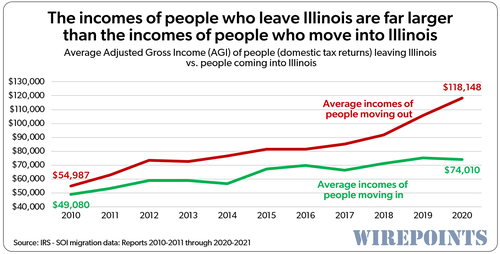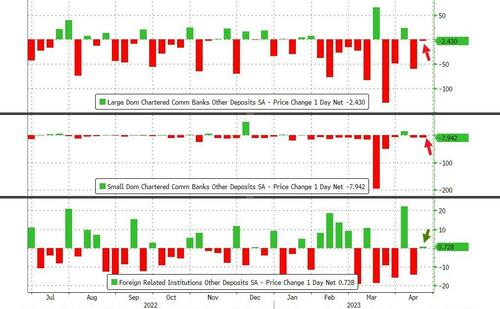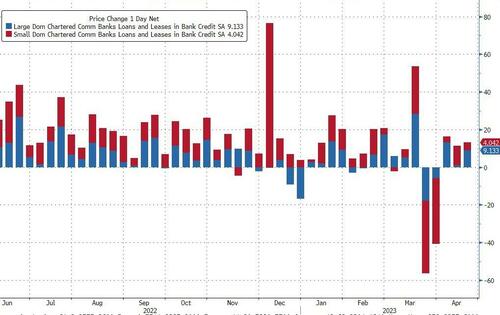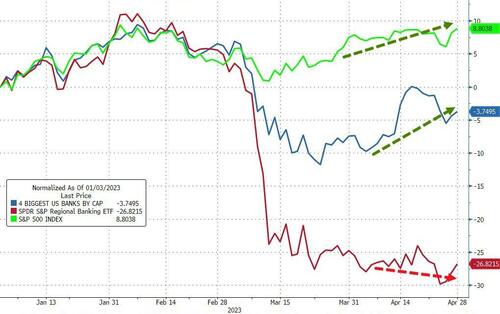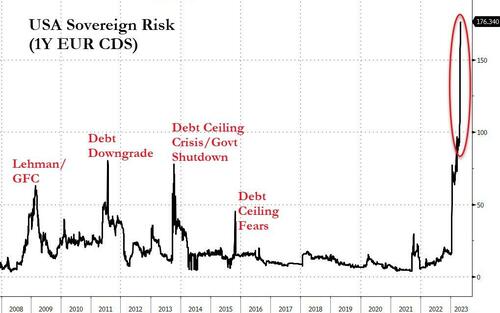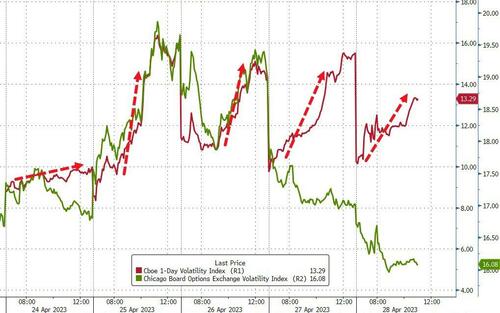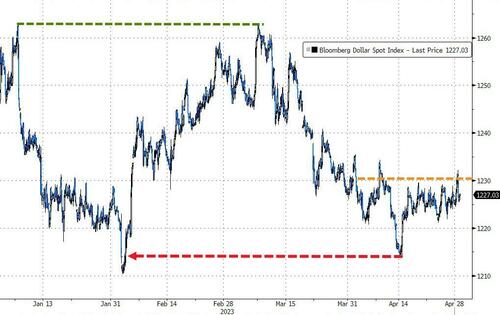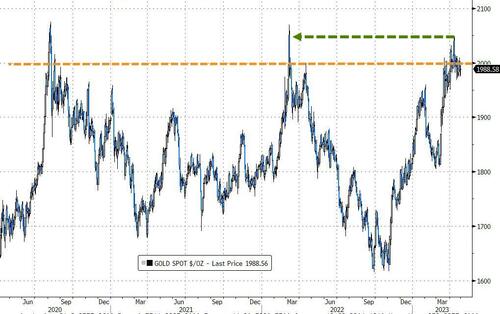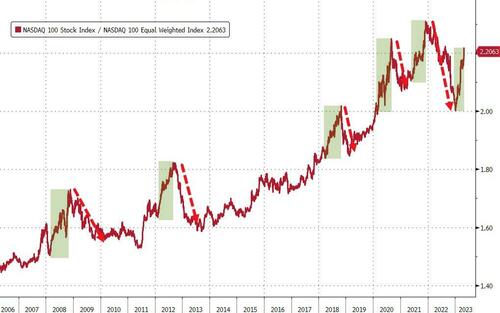I’ve grown completely numb to the daily reporting on alleged ethical problems at the Supreme Court. All of these pieces follow a similar pattern. (1) Reporter spends an inordinate amount of time poring over mountains of publicly-available documents. (2) Reporter finds something that was not disclosed, or not fully-disclosed. (3) Reporter raises allegation that the failure to fully disclose that item is a problem, without actually identifying what that problem is. (4) Reporter interviews left-wing ethics groups who insist that full disclosure is necessary. (5) Reporter interviews the same cadre of law professors, who maintain that even though no actual rule was violated, the Justice should abide by some unwritten, higher standard. (6) Reporter publishes piece, which is widely shared on social media, but not actually read. (7) Sober analysis later reveals that the Justice either complied with the rules or made a good-faith mistake that will promptly be corrected. I’ll have much more to say about this journalistic paint-by-numbers in a future ABA Journal column. Sunlight is a good disinfectant; too much heat will burn everything down.
But you know what the press has largely forgotten about? An actual judicial crisis: how the draft Dobbs opinion leaked to the press. The media should devote as much attention to the leak, as it fixates on who Amy Coney Barrett hosted a baby shower for 20 years ago.
And amidst these attacks, the Supreme Court remains rudderless. We know that the Chef Justice is unable, or unwilling to defend his Court beyond self-serving bromides about the Court as an “institution.” If he thought his shoddy letter to the Senate would quell controversy, he was very wrong. The statement the Chief organized raised more questions than it answered. Fortunately, at least one member of the Court is willing to defend the Court against the never-ending barrage of attacks: Justice Samuel Alito. If Justice Thomas is the intellectual leader of the Court, Justice Alito is its heart.
We see this heart in an interview with the Wall Street Journal, given in mid-April. He defends the Supreme Court in ways the Chief Justice cannot, or will not.
First, Alito explains, correctly, that what will harm the Court’s legitimacy is to rule based on public perception–exactly what the Casey plurality purported to do:
The threat to politicize the court can tempt justices to rule defensively—to take account of political ramifications and thereby politicize their own institution. The plurality explicitly did that in Casey, and some sitting justices have been accused of it in recent years. Justice Alito isn’t one of them.
“This is not a situation in which the right thing to do is different from the expedient thing to do, at least in the long term,” he says. The public “will have reason to question our legitimacy if they see that what we are doing is not following the Constitution and the laws, but we’ve got our finger to the wind”—he lofts a digit—”and we’re issuing decisions that nobody really believes represent our sincere thinking about the law, but are structured in a way to curry favor, avoid controversy or something like that.”
Justice Antonin Scalia said something similar in his dissent in Casey: “The notion that we would decide a case differently from the way we otherwise would have in order to show that we can stand firm against public disapproval is frightening.”
I made this point in a Newsweek column last summer. Dobbs did not simply overrule Casey. Dobbs overruled the “judges of wisdom” who based their decision on popular sentiment.
Justice Alito calls out the incessant criticism targeting the Court’s “legitimacy.”
But as the court has grown more conservative in recent years, the left has stepped up the attacks on the court’s “legitimacy,” including character assassination of individual justices, with little objection from mainstream Democrats and plenty of help from the media.
Justice Alito says “this type of concerted attack on the court and on individual justices” is “new during my lifetime. . . . We are being hammered daily, and I think quite unfairly in a lot of instances.”
Ultimately, these efforts are a self-fulfilling prophecy. If you keep repeating the “legitimacy” line over and over again, it eventually becomes “true.” People will believe the Court is no longer legitimate.
Those who throw the mud then disparage the justices for being dirty. “We’re being bombarded with this,” Justice Alito says, “and then those who are attacking us say, ‘Look how unpopular they are. Look how low their approval rating has sunk.’ Well, yeah, what do you expect when you’re—day in and day out, ‘They’re illegitimate. They’re engaging in all sorts of unethical conduct. They’re doing this, they’re doing that’?”
And these efforts will, in the end, weaken the ability of the Court do its business.
It “undermines confidence in the government,” Justice Alito says. “It’s one thing to say the court is wrong; it’s another thing to say it’s an illegitimate institution. You could say the same thing about Congress and the president. . . . When you say that they’re illegitimate, any of the three branches of government, you’re really striking at something that’s essential to self-government.”
Second, Alito observes that those most familiar with the Court’s work refuse to defend the Court.
“And nobody, practically nobody, is defending us. The idea has always been that judges are not supposed to respond to criticisms, but if the courts are being unfairly attacked, the organized bar will come to their defense.” Instead, “if anything, they’ve participated to some degree in these attacks.”
Indeed, the American Bar Association has adopted a resolution calling on the Court to adopt and ethics code. You may think that resolution is neutral, or even salutary. But the leaders in the legal profession are feeding into the “legitimacy” attack.
Yet, many of the same people who carp about legitimacy also insist that Court “expansion” is the only way to restore the Court’s legitimacy. Alito disagrees.
Justice Alito finds the whole notion appalling: “To change the size of the court just because you want to change the result in cases—that would destroy it. You want to talk about our legitimacy? That would destroy the perception that we’re anything other than a political body.”
Third, Justice Alito turns to Dobbs. Justice Alito echoed Justice Thomas’s concerns that the leak harmed the Court’s collegiality:
He now says that the leak “created an atmosphere of suspicion and distrust. We worked through it, and last year we got our work done. This year, I think, we’re trying to get back to normal operations as much as we can. . . . But it was damaging.”
Alito also reveals that he suspects he knows who leaked the draft.
Justice Alito says the marshal “did a good job with the resources that were available to her” and agrees that the evidence was insufficient for a public accusation. “I personally have a pretty good idea who is responsible, but that’s different from the level of proof that is needed to name somebody,” he says.
Does “who is” here refer to a single person, or to more than one person? I think the former. But more importantly, Justice Alito opines on the motive. Hint, it wasn’t a conservative.
He’s certain about the motive: “It was a part of an effort to prevent the Dobbs draft . . . from becoming the decision of the court. And that’s how it was used for those six weeks by people on the outside—as part of the campaign to try to intimidate the court.”
Alito finds it preposterous that anyone would think a conservative leaked the document:
A few pundits on the left speculated that the leaker might have been a conservative attempting to lock in the five-justice majority and overturn the constitutional right to abortion. “That’s infuriating to me,” Justice Alito says of the theory. “Look, this made us targets of assassination. Would I do that to myself? Would the five of us have done that to ourselves? It’s quite implausible.”
Those who maintain that Alito leaked the opinion to “lock in” votes will now have to accuses Alito of lying. (That won’t be a problem.)
Alito also highlights an obvious fact: a Justice was almost assassinated to prevent the majority from releasing the opinion. In hindsight, at least, a conservative would never have made this move.
That campaign included unlawful assemblies outside justices’ homes, and that wasn’t the worst of it. “Those of us who were thought to be in the majority, thought to have approved my draft opinion, were really targets of assassination,” Justice Alito says. “It was rational for people to believe that they might be able to stop the decision in Dobbs by killing one of us.” On June 8, an armed man was arrested outside the home of Justice Brett Kavanaugh; the suspect was later charged with attempted assassination and has pleaded not guilty.
Justice Alito also weighed in on the changes to his security protocol:
He adds that “I don’t feel physically unsafe, because we now have a lot of protection.” He is “driven around in basically a tank, and I’m not really supposed to go anyplace by myself without the tank and my members of the police force.” Deputy U.S. marshals guard the justices’ homes 24/7. (The U.S. Marshals Service, a bureau of the Justice Department, is distinct from the marshal of the court, who reports to the justices and oversees the Supreme Court Police.)
Finally, Alito also predicted that Justice Scalia would have joined the majority in Dobbs:
How did Scalia escape the opprobrium to which his younger colleagues and successors have been subjected? In part by dissenting often. “Nobody can say for sure,” Justice Alito says, “but I’m willing to bet he would have been on the side that has been so heavily criticized in all the controversial cases. His vote would have been there, and he would have been subjected to the same kind of criticism.”
There’s little doubt that would have been true of Dobbs. “Some decisions,” Justice Alito says, “and I think that Roe and Casey fell in this category, are so egregiously wrong, so clearly wrong, that that’s a very strong factor in support of overruling them.” Scalia was even blunter in Casey: “We should get out of this area, where we have no right to be, and where we do neither ourselves nor the country any good by remaining.”
“When you’re in dissent,” Justice Alito observes, “well, his ideas were amusing and interesting. He spoke at a lot of law schools and he was honored at law schools, but he wasn’t a threat, because those views were not prevailing on issues that really hit home.”
I agree.
The post Justice Alito Defends The Supreme Court In Ways Chief Justice Roberts Cannot appeared first on Reason.com.
from Latest https://ift.tt/lMhPLKj
via IFTTT













